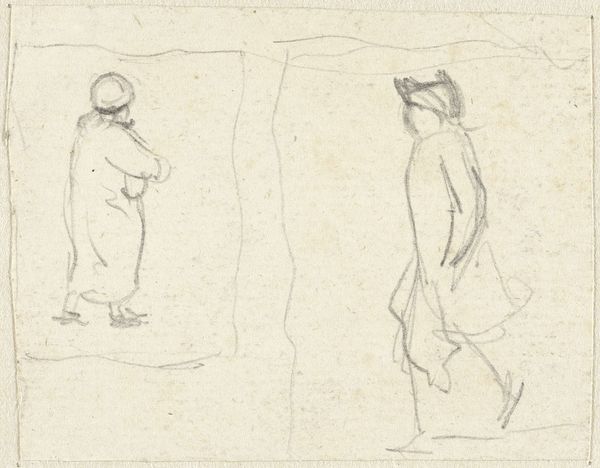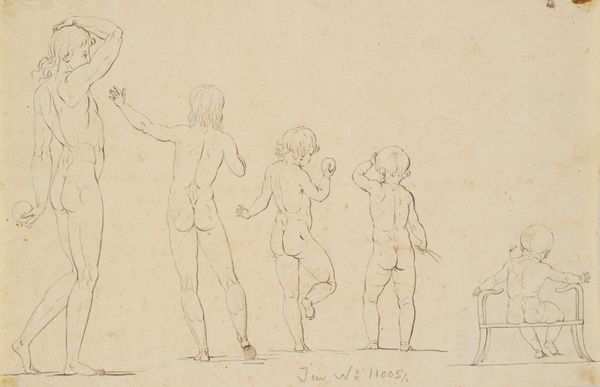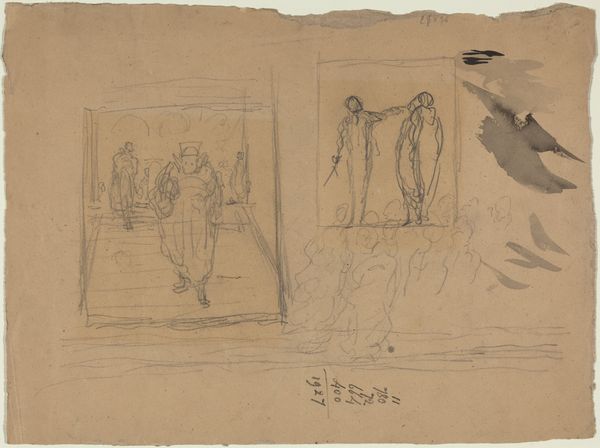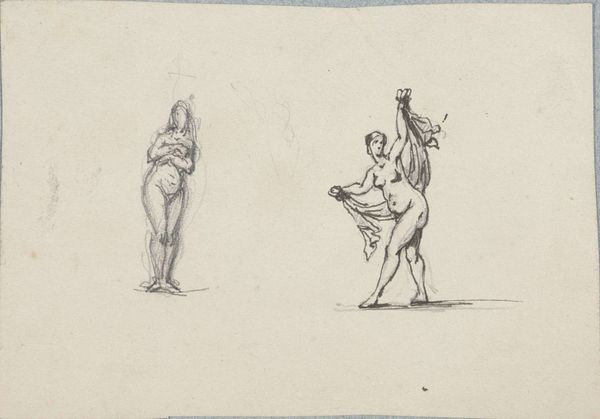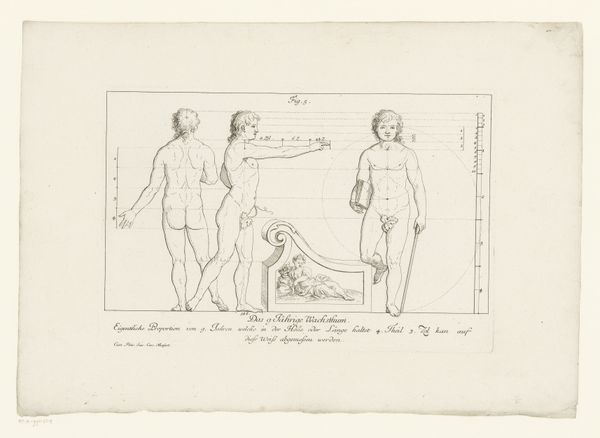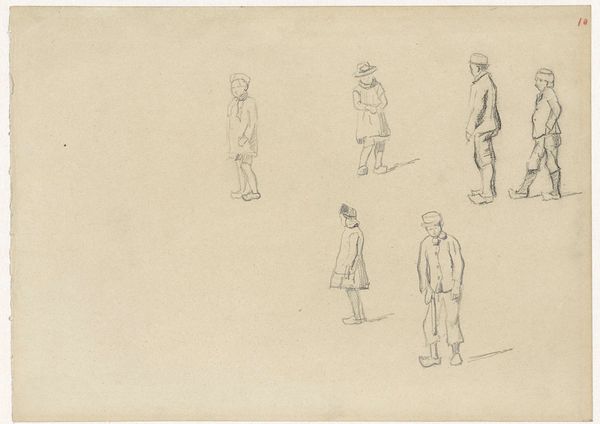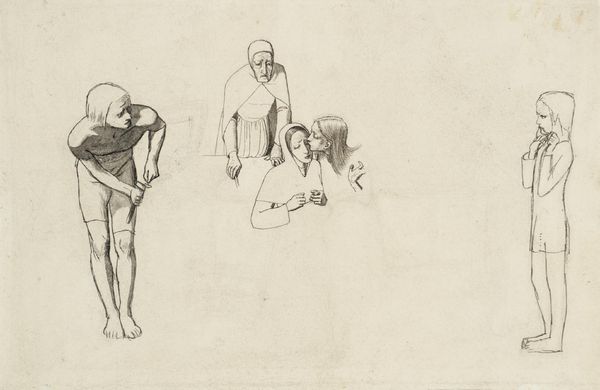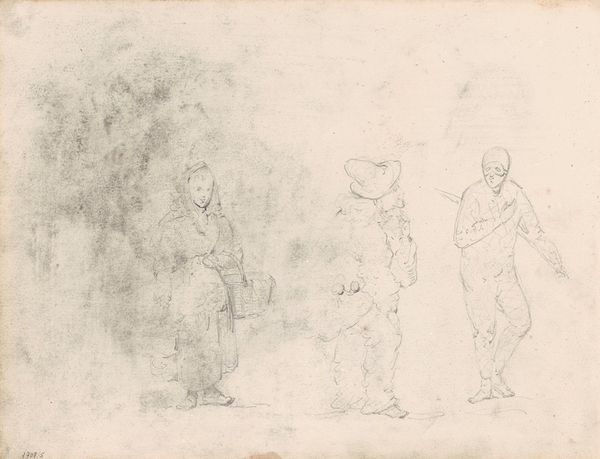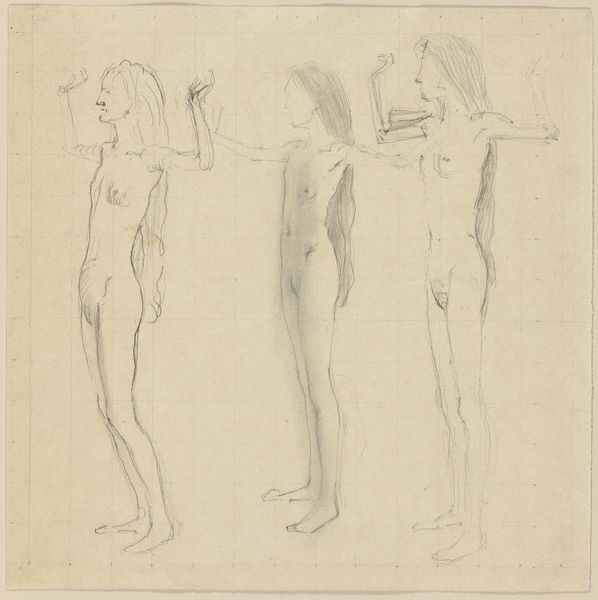
Studier af en liggende figur og af statuen af de tre gratier i Piccolominibiblioteket i Siena 1838 - 1840
0:00
0:00
drawing, pencil
#
drawing
#
figuration
#
11_renaissance
#
pencil
#
nude
Dimensions: 115 mm (height) x 185 mm (width) (bladmål)
Curator: This pencil drawing, “Studies of a reclining figure and of the statue of the three Graces in the Piccolomini Library in Siena,” was rendered by Christen Købke between 1838 and 1840. Editor: My initial impression is one of quiet contemplation. It’s almost ghostly, ethereal in its lightness. There’s a vulnerability in the figures, exposed as they are. Curator: It’s interesting you mention vulnerability, given the historical context. Köbke, a Danish Golden Age painter, would have been deeply aware of the artistic lineage he was stepping into by sketching these classical figures during his travels in Italy. The very act of sketching antiquities and Renaissance artworks was a way of participating in and acknowledging the academic system. Editor: Indeed, and the Three Graces, or Charites, have always represented beauty, charm, and joy. Köbke seems to be exploring how the symbolic weight of idealized beauty can translate through simple pencil strokes. He’s extracting their essence, in a way. Note how their intertwined poses symbolize unity, affection. Curator: I agree. And what is truly noteworthy here is how Købke embeds the observer in the sketch—those scattered, clothed reclining figures around the Graces aren't mere afterthoughts. The modern traveler observing these symbols of eternal beauty. This piece highlights not just an artist learning from the canon but also a quiet assertion of cultural identity and the public role of experiencing art. Editor: I find myself wondering about the personal psychological impact on Købke. Was he searching for some stability, some tangible link to beauty and joy in a world undergoing its own cultural shifts? Perhaps. Art as refuge, both for creator and, now, for the viewer. Curator: A poignant interpretation. Ultimately, this study, housed in the SMK – Statens Museum for Kunst, is much more than just preparatory work; it serves as a reflection of Købke’s era, of the dialogue between the classical and the contemporary. Editor: And for me, it's about recognizing those archetypal ideals and their potential to bring comfort, connection and perhaps, meaning through generations of artistic interpretation.
Comments
No comments
Be the first to comment and join the conversation on the ultimate creative platform.
